- HubSpot AI – A free CRM that uses AI to provide insights on leads and deals. Great for startups or small teams looking for a cost-effective entry point into CRM.
- Zoho AI (Zia) – Goes beyond simple tracking. Zia predicts sales trends, scores leads based on their likelihood to convert, and automates repetitive workflows so nothing slips through the cracks.
- Salesforce Einstein – Designed for larger teams or enterprises, it delivers advanced AI features like predictive analytics, personalized recommendations, and automation at scale. It’s powerful but comes at a higher price point.
AI-driven CRMs remove the guesswork from sales and customer management:
- Lead scoring: Identify which prospects are most likely to buy, so you focus your energy on the right opportunities.
- Automated follow-ups: No more forgetting to send that reminder email, AI handles it for you.
- Customer insights: Track behavior, interactions, and purchase history without manual entry, giving you a clear picture of each customer’s journey.
- Sales forecasting: Use predictive models to anticipate revenue and adjust your strategy ahead of time.
Consider a small digital agency with limited staff. Instead of manually tracking every potential client, they implement Zoho AI.
The system scores leads based on past interactions and automatically sends reminders for follow-ups.
The result? They spend less time on admin tasks, never miss a hot lead, and consistently close more deals, all without needing to hire additional salespeople.
Start with a free or low-cost CRM like HubSpot AI to learn how AI can fit into your workflow. As your sales pipeline grows, you can transition into more advanced platforms like Salesforce Einstein to scale up without losing efficiency.
AI for Project Management & Operations
Keeping projects on track is one of the biggest challenges for small businesses. Traditional tools often require a lot of manual input, updating tasks, chasing deadlines, or rewriting meeting notes, all of which eats into valuable time.
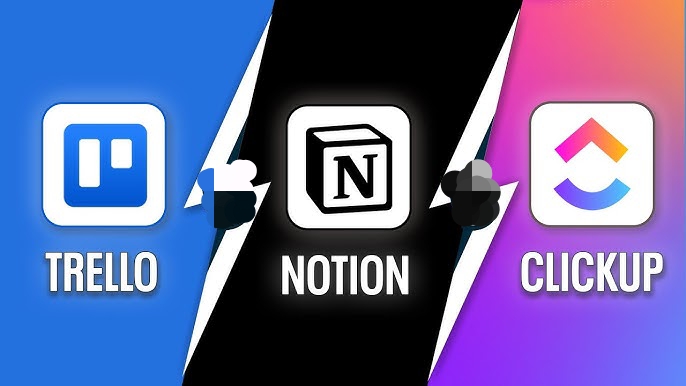
AI-powered project management tools cut through the clutter by automating the repetitive work, suggesting smarter ways to organize tasks, and even predicting potential bottlenecks before they happen.
Tools to try:
- Notion AI – Goes beyond simple note-taking. It can summarize meeting notes into clear action steps, draft standard operating procedures (SOPs), create project timelines, and even generate content for team documentation.
- ClickUp AI – A versatile tool that analyzes tasks, suggests priorities based on deadlines and workload, and automates workflows so your team spends less time managing projects and more time executing them.
- Trello + AI plugins – Perfect for teams that prefer a visual board system. AI plugins can automatically categorize tasks, predict delays, and send smart reminders to ensure deadlines don’t slip.
What can they do:
- Automate admin work: Meeting summaries, task updates, and follow-up emails happen automatically.
- Improve prioritization: AI can rank which tasks matter most and flag those at risk of delay.
- Streamline communication: Team members stay aligned without endless back-and-forth emails.
- Forecast challenges: AI can analyze patterns in your workflow to predict roadblocks before they happen.
Example in Action
A small marketing team holds weekly brainstorming sessions. Normally, someone would spend hours transcribing notes, turning them into tasks, and emailing the team.
With Notion AI, the meeting is instantly summarized into action items, assigned to the right people, and added to the project timeline.
Instead of wasting hours on admin work, the team can focus on creating campaigns that actually drive results.
Start small, use AI for one task, like meeting summaries or deadline reminders. Once your team gets comfortable, expand into more advanced features like predictive workload balancing or AI-generated reports.
AI for HR & Recruitment
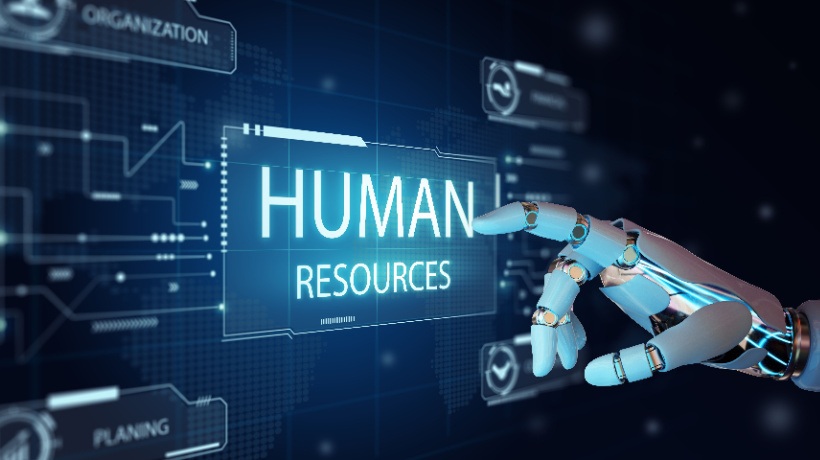
Recruitment and employee management can drain both time and resources for small businesses.
Posting jobs, sorting through hundreds of resumes, scheduling interviews, and answering repetitive employee questions often overwhelm lean HR teams, or fall on the business owner.
AI helps by automating the repetitive, time-heavy tasks, allowing HR teams to focus on people rather than paperwork.
Tools to try
- HireVue AI – Goes beyond traditional interviews by analyzing candidate responses in video assessments. It can evaluate communication skills, problem-solving abilities, and even cultural fit, giving recruiters deeper insights before the first in-person meeting.
- Workable AI – Handles the early stages of hiring by writing job descriptions, ranking candidates based on their resumes, and providing shortlists of the strongest applicants. This Workable drastically reduces the time spent reviewing unqualified resumes.
- AI Onboarding Bots – After hiring, onboarding bots act as virtual HR assistants. They answer FAQs about company policies, provide training resources, and guide new hires through setup steps, helping employees feel supported from day one without overwhelming HR staff.
What can they help you with:
- Streamline recruitment: Quickly identify top candidates from hundreds of applications.
- Save time: Automate repetitive tasks like scheduling, resume scanning, and initial communication.
- Enhance onboarding: Provide instant answers to new employees, reducing confusion and improving retention.
- Improve candidate experience: Faster responses and smoother processes make your company more attractive to applicants.
Example in Action
A fast-growing ecommerce brand posts a new role and receives 500 applications. Instead of the HR manager spending days sorting through resumes, Workable AI analyzes them instantly and highlights the top 20 candidates most aligned with the role.
Meanwhile, once the best candidates are hired, an AI onboarding bot steps in to guide them through setting up payroll, signing policies, and learning company tools, freeing the HR team to focus on culture and employee growth.
Start by using AI in the recruitment stage (resume filtering and candidate ranking). Once comfortable, layer in AI onboarding tools to build a smoother, more professional new-hire experience.
Affordable or Free AI Tools vs. Expensive Traditional Software
Here’s a quick cost comparison:
| Task | Traditional Software | AI Alternative | Cost Savings |
| Customer support | Hiring 1 support agent ($2,500+/month) | Tidio AI ($29/month) | 98% cheaper |
| Content creation | Marketing agency ($1,500+/month) | Jasper AI ($49/month) | 97% cheaper |
| Accounting | Bookkeeper ($400+/month) | FreshBooks AI ($19/month) | 95% cheaper |
| CRM | Salesforce ($150/user/month) | HubSpot AI (Free) | 100% cheaper |
| Design | Adobe Creative Cloud ($55/month) | Canva AI (Free–$12/month) | 80% cheaper |
As you can see, small businesses can save thousands per year by switching to AI tools.
ALSO READ: The Biggest Mistake Beginners Make With AI (And How to Avoid It)
How to Integrate AI Into Your Business Without Overcomplicating
One of the biggest mistakes small businesses make with AI is trying to do everything at once, signing up for multiple tools, paying for features they don’t need, and overwhelming their team in the process.
The truth is, AI should make your business simpler, not more stressful. The best approach is to introduce it strategically, step by step.
A simple framework to follow:
- Start Small – Choose one area of your business that eats up the most time or resources. For many, this might be customer support, bookkeeping, or marketing content. By focusing on a single function, you can see results quickly without disrupting your entire workflow.
- Test Tools First – Most AI platforms offer free trials or limited plans. Take advantage of these to experiment. Test usability, accuracy, and whether the tool actually solves your problem before committing to a paid version.
- Measure ROI – Keep track of the hours saved, the reduction in costs, or the increase in revenue. This helps you determine if the tool is worth keeping and prevents you from paying for “shiny” software that doesn’t move the needle.
- Scale Gradually – Once you’re comfortable and see real benefits, only then should you add more tools. This phased approach ensures you’re building on proven wins instead of stacking complexity.
Example in Action
A small neighborhood bakery wants to attract more customers but doesn’t have a marketing team. They start with Canva AI to design quick, professional social media posts.
Within weeks, foot traffic improves thanks to consistent online visibility. Encouraged by this success, the owner later introduces FreshBooks AI to handle invoices and payment reminders, reducing late payments.
By integrating AI slowly, the bakery grows its efficiency without feeling overwhelmed or overspending.
Think of AI as hiring digital assistants. Start with one “assistant” for your biggest pain point. Once they prove valuable, bring on another.
This way, your team (and budget) adjusts naturally, and AI becomes an asset instead of a burden.
Conclusion
Automation with AI isn’t about replacing people, it’s about making life easier for small business owners who already wear too many hats.
Here’s your AI adoption starter kit:
- Use Tidio AI for customer support.
- Try Canva AI + Buffer AI for marketing.
- Automate invoices with FreshBooks AI.
- Manage projects with Notion AI.
Start small, track the results, and grow from there.
By swapping expensive software (or manual work) for AI-powered tools, you can save thousands per year while gaining back the most valuable resource of all, your time.
- No more hours spent manually entering receipts.
- Automated payment reminders mean fewer late or missed payments.
- AI-generated financial reports provide clarity, helping you make smarter and faster business decisions.
Imagine a freelance designer juggling multiple clients. Instead of chasing payments or forgetting to send invoices, they set up FreshBooks AI.
The system creates invoices automatically after each project and gently reminds clients when payments are due.
This not only reduces awkward conversations but also ensures a steady cash flow without extra effort.
Start by automating invoicing and expense tracking. Once that’s in place, explore AI-driven forecasting tools to get a clearer picture of your business’s future financial health.
AI for Sales & CRM Management
Sales and customer relationship management (CRM) are the lifelines of any business. But traditional CRM tools, while powerful, often come with hefty subscription fees and require a lot of manual input.
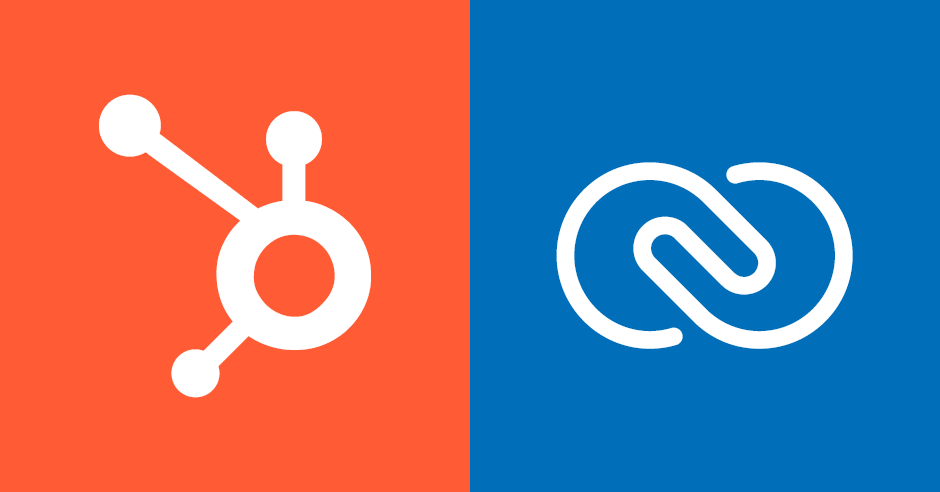
For small businesses, that’s both costly and time-consuming. AI-driven CRMs change the game by offering smarter, leaner solutions that help you focus on closing deals rather than managing spreadsheets.
Tools to try:
- HubSpot AI – A free CRM that uses AI to provide insights on leads and deals. Great for startups or small teams looking for a cost-effective entry point into CRM.
- Zoho AI (Zia) – Goes beyond simple tracking. Zia predicts sales trends, scores leads based on their likelihood to convert, and automates repetitive workflows so nothing slips through the cracks.
- Salesforce Einstein – Designed for larger teams or enterprises, it delivers advanced AI features like predictive analytics, personalized recommendations, and automation at scale. It’s powerful but comes at a higher price point.
AI-driven CRMs remove the guesswork from sales and customer management:
- Lead scoring: Identify which prospects are most likely to buy, so you focus your energy on the right opportunities.
- Automated follow-ups: No more forgetting to send that reminder email, AI handles it for you.
- Customer insights: Track behavior, interactions, and purchase history without manual entry, giving you a clear picture of each customer’s journey.
- Sales forecasting: Use predictive models to anticipate revenue and adjust your strategy ahead of time.
Consider a small digital agency with limited staff. Instead of manually tracking every potential client, they implement Zoho AI.
The system scores leads based on past interactions and automatically sends reminders for follow-ups.
The result? They spend less time on admin tasks, never miss a hot lead, and consistently close more deals, all without needing to hire additional salespeople.
Start with a free or low-cost CRM like HubSpot AI to learn how AI can fit into your workflow. As your sales pipeline grows, you can transition into more advanced platforms like Salesforce Einstein to scale up without losing efficiency.
AI for Project Management & Operations
Keeping projects on track is one of the biggest challenges for small businesses. Traditional tools often require a lot of manual input, updating tasks, chasing deadlines, or rewriting meeting notes, all of which eats into valuable time.

AI-powered project management tools cut through the clutter by automating the repetitive work, suggesting smarter ways to organize tasks, and even predicting potential bottlenecks before they happen.
Tools to try:
- Notion AI – Goes beyond simple note-taking. It can summarize meeting notes into clear action steps, draft standard operating procedures (SOPs), create project timelines, and even generate content for team documentation.
- ClickUp AI – A versatile tool that analyzes tasks, suggests priorities based on deadlines and workload, and automates workflows so your team spends less time managing projects and more time executing them.
- Trello + AI plugins – Perfect for teams that prefer a visual board system. AI plugins can automatically categorize tasks, predict delays, and send smart reminders to ensure deadlines don’t slip.
What can they do:
- Automate admin work: Meeting summaries, task updates, and follow-up emails happen automatically.
- Improve prioritization: AI can rank which tasks matter most and flag those at risk of delay.
- Streamline communication: Team members stay aligned without endless back-and-forth emails.
- Forecast challenges: AI can analyze patterns in your workflow to predict roadblocks before they happen.
Example in Action
A small marketing team holds weekly brainstorming sessions. Normally, someone would spend hours transcribing notes, turning them into tasks, and emailing the team.
With Notion AI, the meeting is instantly summarized into action items, assigned to the right people, and added to the project timeline.
Instead of wasting hours on admin work, the team can focus on creating campaigns that actually drive results.
Start small, use AI for one task, like meeting summaries or deadline reminders. Once your team gets comfortable, expand into more advanced features like predictive workload balancing or AI-generated reports.
AI for HR & Recruitment

Recruitment and employee management can drain both time and resources for small businesses.
Posting jobs, sorting through hundreds of resumes, scheduling interviews, and answering repetitive employee questions often overwhelm lean HR teams, or fall on the business owner.
AI helps by automating the repetitive, time-heavy tasks, allowing HR teams to focus on people rather than paperwork.
Tools to try
- HireVue AI – Goes beyond traditional interviews by analyzing candidate responses in video assessments. It can evaluate communication skills, problem-solving abilities, and even cultural fit, giving recruiters deeper insights before the first in-person meeting.
- Workable AI – Handles the early stages of hiring by writing job descriptions, ranking candidates based on their resumes, and providing shortlists of the strongest applicants. This Workable drastically reduces the time spent reviewing unqualified resumes.
- AI Onboarding Bots – After hiring, onboarding bots act as virtual HR assistants. They answer FAQs about company policies, provide training resources, and guide new hires through setup steps, helping employees feel supported from day one without overwhelming HR staff.
What can they help you with:
- Streamline recruitment: Quickly identify top candidates from hundreds of applications.
- Save time: Automate repetitive tasks like scheduling, resume scanning, and initial communication.
- Enhance onboarding: Provide instant answers to new employees, reducing confusion and improving retention.
- Improve candidate experience: Faster responses and smoother processes make your company more attractive to applicants.
Example in Action
A fast-growing ecommerce brand posts a new role and receives 500 applications. Instead of the HR manager spending days sorting through resumes, Workable AI analyzes them instantly and highlights the top 20 candidates most aligned with the role.
Meanwhile, once the best candidates are hired, an AI onboarding bot steps in to guide them through setting up payroll, signing policies, and learning company tools, freeing the HR team to focus on culture and employee growth.
Start by using AI in the recruitment stage (resume filtering and candidate ranking). Once comfortable, layer in AI onboarding tools to build a smoother, more professional new-hire experience.
Affordable or Free AI Tools vs. Expensive Traditional Software
Here’s a quick cost comparison:
| Task | Traditional Software | AI Alternative | Cost Savings |
| Customer support | Hiring 1 support agent ($2,500+/month) | Tidio AI ($29/month) | 98% cheaper |
| Content creation | Marketing agency ($1,500+/month) | Jasper AI ($49/month) | 97% cheaper |
| Accounting | Bookkeeper ($400+/month) | FreshBooks AI ($19/month) | 95% cheaper |
| CRM | Salesforce ($150/user/month) | HubSpot AI (Free) | 100% cheaper |
| Design | Adobe Creative Cloud ($55/month) | Canva AI (Free–$12/month) | 80% cheaper |
As you can see, small businesses can save thousands per year by switching to AI tools.
ALSO READ: The Biggest Mistake Beginners Make With AI (And How to Avoid It)
How to Integrate AI Into Your Business Without Overcomplicating
One of the biggest mistakes small businesses make with AI is trying to do everything at once, signing up for multiple tools, paying for features they don’t need, and overwhelming their team in the process.
The truth is, AI should make your business simpler, not more stressful. The best approach is to introduce it strategically, step by step.
A simple framework to follow:
- Start Small – Choose one area of your business that eats up the most time or resources. For many, this might be customer support, bookkeeping, or marketing content. By focusing on a single function, you can see results quickly without disrupting your entire workflow.
- Test Tools First – Most AI platforms offer free trials or limited plans. Take advantage of these to experiment. Test usability, accuracy, and whether the tool actually solves your problem before committing to a paid version.
- Measure ROI – Keep track of the hours saved, the reduction in costs, or the increase in revenue. This helps you determine if the tool is worth keeping and prevents you from paying for “shiny” software that doesn’t move the needle.
- Scale Gradually – Once you’re comfortable and see real benefits, only then should you add more tools. This phased approach ensures you’re building on proven wins instead of stacking complexity.
Example in Action
A small neighborhood bakery wants to attract more customers but doesn’t have a marketing team. They start with Canva AI to design quick, professional social media posts.
Within weeks, foot traffic improves thanks to consistent online visibility. Encouraged by this success, the owner later introduces FreshBooks AI to handle invoices and payment reminders, reducing late payments.
By integrating AI slowly, the bakery grows its efficiency without feeling overwhelmed or overspending.
Think of AI as hiring digital assistants. Start with one “assistant” for your biggest pain point. Once they prove valuable, bring on another.
This way, your team (and budget) adjusts naturally, and AI becomes an asset instead of a burden.
Conclusion
Automation with AI isn’t about replacing people, it’s about making life easier for small business owners who already wear too many hats.
Here’s your AI adoption starter kit:
- Use Tidio AI for customer support.
- Try Canva AI + Buffer AI for marketing.
- Automate invoices with FreshBooks AI.
- Manage projects with Notion AI.
Start small, track the results, and grow from there.
By swapping expensive software (or manual work) for AI-powered tools, you can save thousands per year while gaining back the most valuable resource of all, your time.
- QuickBooks AI – Handles expense categorization automatically, forecasts cash flow, and even helps prepare for tax season.
- Xero AI – Gives real-time insights into your business’s financial health, highlighting trends and risks you might miss.
- FreshBooks AI – Makes invoicing effortless by creating professional invoices, tracking payments, and sending reminders.
AI takes care of the repetitive, time-consuming tasks so you don’t have to:
- No more hours spent manually entering receipts.
- Automated payment reminders mean fewer late or missed payments.
- AI-generated financial reports provide clarity, helping you make smarter and faster business decisions.
Imagine a freelance designer juggling multiple clients. Instead of chasing payments or forgetting to send invoices, they set up FreshBooks AI.
The system creates invoices automatically after each project and gently reminds clients when payments are due.
This not only reduces awkward conversations but also ensures a steady cash flow without extra effort.
Start by automating invoicing and expense tracking. Once that’s in place, explore AI-driven forecasting tools to get a clearer picture of your business’s future financial health.
AI for Sales & CRM Management
Sales and customer relationship management (CRM) are the lifelines of any business. But traditional CRM tools, while powerful, often come with hefty subscription fees and require a lot of manual input.

For small businesses, that’s both costly and time-consuming. AI-driven CRMs change the game by offering smarter, leaner solutions that help you focus on closing deals rather than managing spreadsheets.
Tools to try:
- HubSpot AI – A free CRM that uses AI to provide insights on leads and deals. Great for startups or small teams looking for a cost-effective entry point into CRM.
- Zoho AI (Zia) – Goes beyond simple tracking. Zia predicts sales trends, scores leads based on their likelihood to convert, and automates repetitive workflows so nothing slips through the cracks.
- Salesforce Einstein – Designed for larger teams or enterprises, it delivers advanced AI features like predictive analytics, personalized recommendations, and automation at scale. It’s powerful but comes at a higher price point.
AI-driven CRMs remove the guesswork from sales and customer management:
- Lead scoring: Identify which prospects are most likely to buy, so you focus your energy on the right opportunities.
- Automated follow-ups: No more forgetting to send that reminder email, AI handles it for you.
- Customer insights: Track behavior, interactions, and purchase history without manual entry, giving you a clear picture of each customer’s journey.
- Sales forecasting: Use predictive models to anticipate revenue and adjust your strategy ahead of time.
Consider a small digital agency with limited staff. Instead of manually tracking every potential client, they implement Zoho AI.
The system scores leads based on past interactions and automatically sends reminders for follow-ups.
The result? They spend less time on admin tasks, never miss a hot lead, and consistently close more deals, all without needing to hire additional salespeople.
Start with a free or low-cost CRM like HubSpot AI to learn how AI can fit into your workflow. As your sales pipeline grows, you can transition into more advanced platforms like Salesforce Einstein to scale up without losing efficiency.
AI for Project Management & Operations
Keeping projects on track is one of the biggest challenges for small businesses. Traditional tools often require a lot of manual input, updating tasks, chasing deadlines, or rewriting meeting notes, all of which eats into valuable time.

AI-powered project management tools cut through the clutter by automating the repetitive work, suggesting smarter ways to organize tasks, and even predicting potential bottlenecks before they happen.
Tools to try:
- Notion AI – Goes beyond simple note-taking. It can summarize meeting notes into clear action steps, draft standard operating procedures (SOPs), create project timelines, and even generate content for team documentation.
- ClickUp AI – A versatile tool that analyzes tasks, suggests priorities based on deadlines and workload, and automates workflows so your team spends less time managing projects and more time executing them.
- Trello + AI plugins – Perfect for teams that prefer a visual board system. AI plugins can automatically categorize tasks, predict delays, and send smart reminders to ensure deadlines don’t slip.
What can they do:
- Automate admin work: Meeting summaries, task updates, and follow-up emails happen automatically.
- Improve prioritization: AI can rank which tasks matter most and flag those at risk of delay.
- Streamline communication: Team members stay aligned without endless back-and-forth emails.
- Forecast challenges: AI can analyze patterns in your workflow to predict roadblocks before they happen.
Example in Action
A small marketing team holds weekly brainstorming sessions. Normally, someone would spend hours transcribing notes, turning them into tasks, and emailing the team.
With Notion AI, the meeting is instantly summarized into action items, assigned to the right people, and added to the project timeline.
Instead of wasting hours on admin work, the team can focus on creating campaigns that actually drive results.
Start small, use AI for one task, like meeting summaries or deadline reminders. Once your team gets comfortable, expand into more advanced features like predictive workload balancing or AI-generated reports.
AI for HR & Recruitment

Recruitment and employee management can drain both time and resources for small businesses.
Posting jobs, sorting through hundreds of resumes, scheduling interviews, and answering repetitive employee questions often overwhelm lean HR teams, or fall on the business owner.
AI helps by automating the repetitive, time-heavy tasks, allowing HR teams to focus on people rather than paperwork.
Tools to try
- HireVue AI – Goes beyond traditional interviews by analyzing candidate responses in video assessments. It can evaluate communication skills, problem-solving abilities, and even cultural fit, giving recruiters deeper insights before the first in-person meeting.
- Workable AI – Handles the early stages of hiring by writing job descriptions, ranking candidates based on their resumes, and providing shortlists of the strongest applicants. This Workable drastically reduces the time spent reviewing unqualified resumes.
- AI Onboarding Bots – After hiring, onboarding bots act as virtual HR assistants. They answer FAQs about company policies, provide training resources, and guide new hires through setup steps, helping employees feel supported from day one without overwhelming HR staff.
What can they help you with:
- Streamline recruitment: Quickly identify top candidates from hundreds of applications.
- Save time: Automate repetitive tasks like scheduling, resume scanning, and initial communication.
- Enhance onboarding: Provide instant answers to new employees, reducing confusion and improving retention.
- Improve candidate experience: Faster responses and smoother processes make your company more attractive to applicants.
Example in Action
A fast-growing ecommerce brand posts a new role and receives 500 applications. Instead of the HR manager spending days sorting through resumes, Workable AI analyzes them instantly and highlights the top 20 candidates most aligned with the role.
Meanwhile, once the best candidates are hired, an AI onboarding bot steps in to guide them through setting up payroll, signing policies, and learning company tools, freeing the HR team to focus on culture and employee growth.
Start by using AI in the recruitment stage (resume filtering and candidate ranking). Once comfortable, layer in AI onboarding tools to build a smoother, more professional new-hire experience.
Affordable or Free AI Tools vs. Expensive Traditional Software
Here’s a quick cost comparison:
| Task | Traditional Software | AI Alternative | Cost Savings |
| Customer support | Hiring 1 support agent ($2,500+/month) | Tidio AI ($29/month) | 98% cheaper |
| Content creation | Marketing agency ($1,500+/month) | Jasper AI ($49/month) | 97% cheaper |
| Accounting | Bookkeeper ($400+/month) | FreshBooks AI ($19/month) | 95% cheaper |
| CRM | Salesforce ($150/user/month) | HubSpot AI (Free) | 100% cheaper |
| Design | Adobe Creative Cloud ($55/month) | Canva AI (Free–$12/month) | 80% cheaper |
As you can see, small businesses can save thousands per year by switching to AI tools.
ALSO READ: The Biggest Mistake Beginners Make With AI (And How to Avoid It)
How to Integrate AI Into Your Business Without Overcomplicating
One of the biggest mistakes small businesses make with AI is trying to do everything at once, signing up for multiple tools, paying for features they don’t need, and overwhelming their team in the process.
The truth is, AI should make your business simpler, not more stressful. The best approach is to introduce it strategically, step by step.
A simple framework to follow:
- Start Small – Choose one area of your business that eats up the most time or resources. For many, this might be customer support, bookkeeping, or marketing content. By focusing on a single function, you can see results quickly without disrupting your entire workflow.
- Test Tools First – Most AI platforms offer free trials or limited plans. Take advantage of these to experiment. Test usability, accuracy, and whether the tool actually solves your problem before committing to a paid version.
- Measure ROI – Keep track of the hours saved, the reduction in costs, or the increase in revenue. This helps you determine if the tool is worth keeping and prevents you from paying for “shiny” software that doesn’t move the needle.
- Scale Gradually – Once you’re comfortable and see real benefits, only then should you add more tools. This phased approach ensures you’re building on proven wins instead of stacking complexity.
Example in Action
A small neighborhood bakery wants to attract more customers but doesn’t have a marketing team. They start with Canva AI to design quick, professional social media posts.
Within weeks, foot traffic improves thanks to consistent online visibility. Encouraged by this success, the owner later introduces FreshBooks AI to handle invoices and payment reminders, reducing late payments.
By integrating AI slowly, the bakery grows its efficiency without feeling overwhelmed or overspending.
Think of AI as hiring digital assistants. Start with one “assistant” for your biggest pain point. Once they prove valuable, bring on another.
This way, your team (and budget) adjusts naturally, and AI becomes an asset instead of a burden.
Conclusion
Automation with AI isn’t about replacing people, it’s about making life easier for small business owners who already wear too many hats.
Here’s your AI adoption starter kit:
- Use Tidio AI for customer support.
- Try Canva AI + Buffer AI for marketing.
- Automate invoices with FreshBooks AI.
- Manage projects with Notion AI.
Start small, track the results, and grow from there.
By swapping expensive software (or manual work) for AI-powered tools, you can save thousands per year while gaining back the most valuable resource of all, your time.
Running a small business today often feels like juggling ten jobs at once. You’re the marketer, accountant, HR manager, customer support agent, and sometimes even the IT department.
The problem? Each role takes up valuable time and money. Hiring extra staff or subscribing to multiple expensive software tools isn’t always an option for small businesses running on tight budgets.
That’s where Artificial Intelligence (AI) steps in.
AI-powered tools are no longer reserved for big corporations with deep pockets. They’re accessible, affordable (many even free), and capable of automating everyday tasks like customer service, bookkeeping, content creation, and project management.
The best part? These tools can replace expensive software subscriptions and free up your time so you can focus on growing your business instead of getting buried in repetitive work.
Let’s walk you through AI tools that can cut costs, boost productivity, and help your small business scale, without burning a hole in your wallet.
AI for Communication & Customer Support
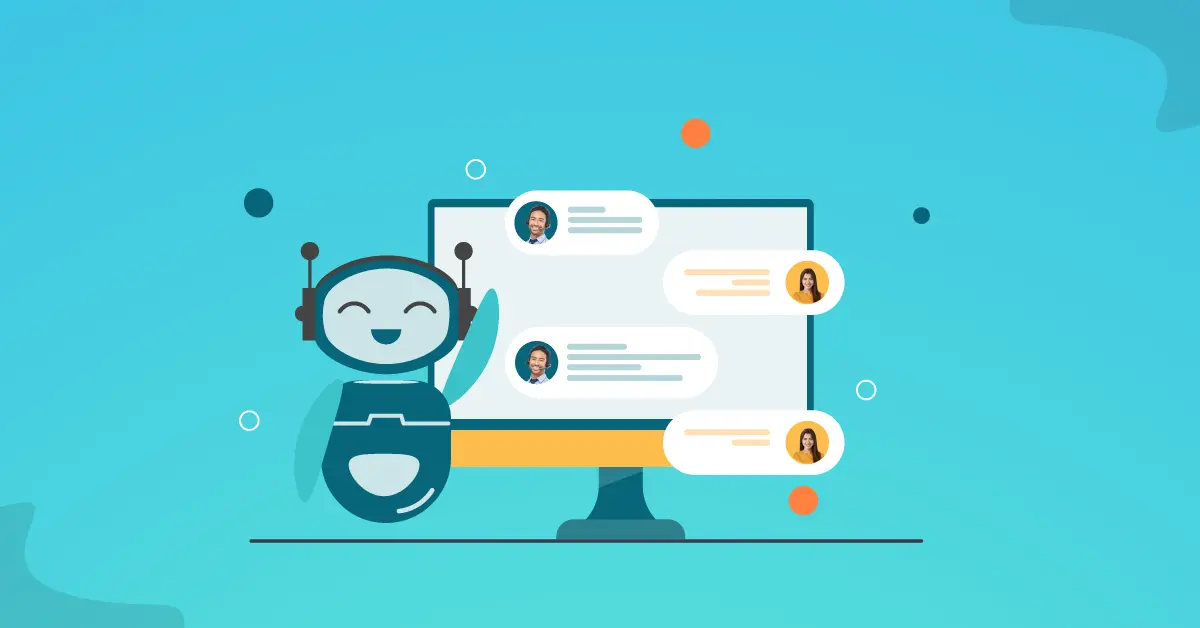
Customers expect fast, reliable, and around-the-clock responses. But for most small businesses, hiring a full 24/7 support team simply isn’t realistic.
This is where AI chatbots and virtual assistants step in to fill the gap, delivering instant support while saving time and money.
Chatbots vs. Human Agents
There are a few notable differences between chat bots and human agents, but the two you should pay attention to are:
- Human agents: Valuable for complex, high-touch interactions, but limited by cost, working hours, and capacity. A single person can only juggle a handful of conversations at once.
- AI chatbots: Available 24/7, capable of managing thousands of conversations simultaneously, and far more affordable. They provide consistency, scale, and efficiency that human teams can’t match alone.
AI Support Tools Worth Exploring
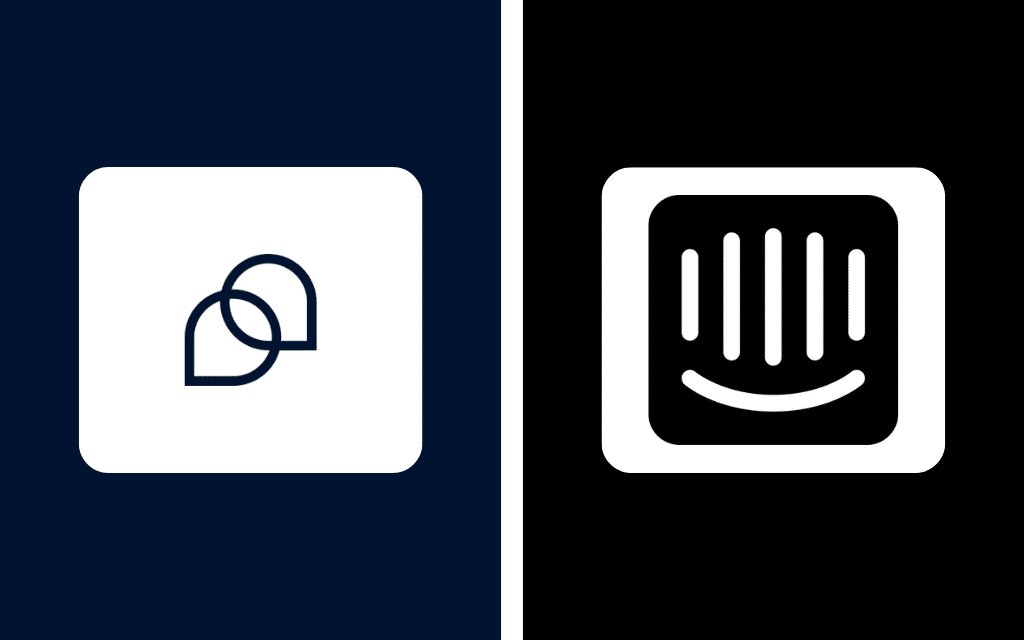
The past couple of years has seen a lot of AI support tools break into the market, but the some of the best are:
- Tidio – Combines live chat with AI chatbots, making it perfect for websites and ecommerce stores that want to balance human touch with automation.
- Intercom AI – Goes beyond simple FAQs by learning from past interactions and automating recurring queries, while still offering smooth hand-offs to human agents when needed.
- ChatGPT-powered bots – Highly customizable. They can answer FAQs, book appointments, assist with troubleshooting, and even suggest related products to increase sales.
- Drift AI – Designed for lead generation and sales conversations, helping businesses qualify prospects before connecting them with a real salesperson.
- Freshdesk with Freddy AI – Great for ticketing systems. Freddy analyzes conversations, suggests solutions, and helps prioritize urgent issues.
Real-World Example
Imagine a small online boutique. Without AI, the staff might spend hours every week replying to the same question: “Do you ship internationally?”
By installing an AI chatbot, those repetitive queries are answered instantly. Staff members are then freed up to handle personalized styling advice, order issues, or other high-value customer interactions.
The best approach is AI + human collaboration. Let AI handle routine questions and tasks, while your human agents focus on empathy-driven conversations that build stronger customer relationships.
ALSO READ: How to Build a Custom Chatbot for Your Website Without Coding
AI for Marketing & Content Creation
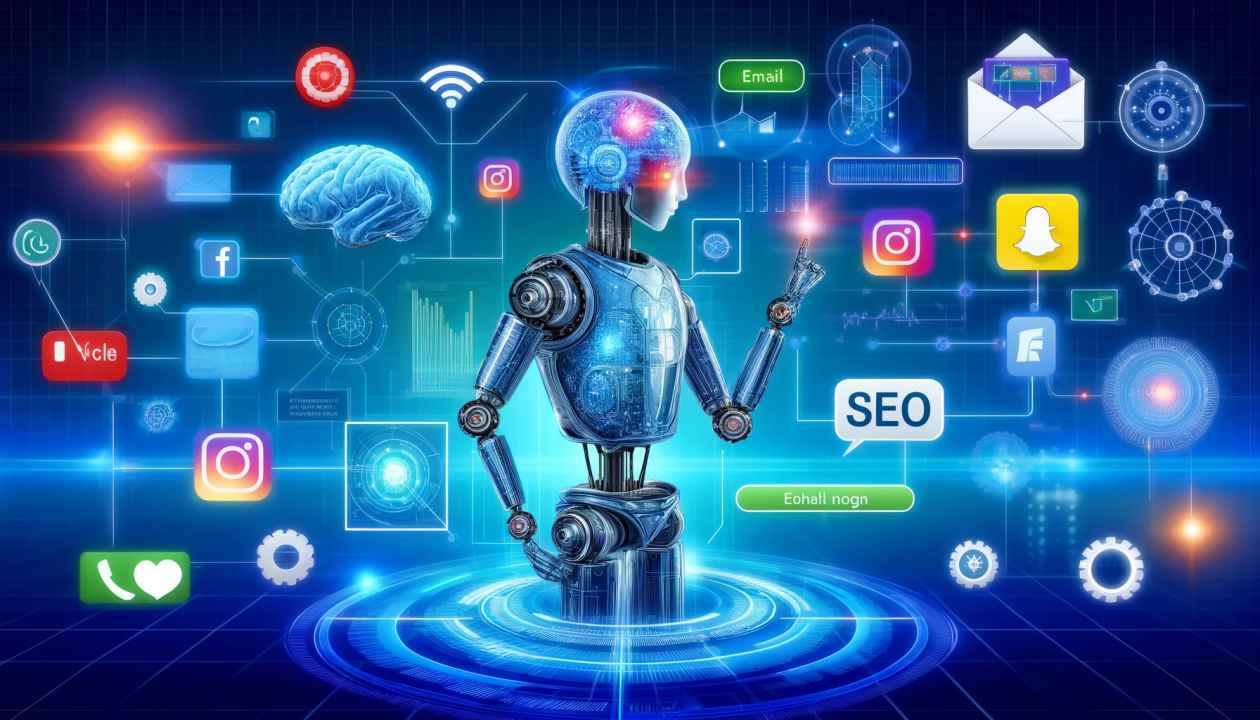
Marketing is often one of the biggest expenses for small businesses. Hiring agencies can cost thousands of dollars each month, and even investing in a full suite of marketing tools can quickly drain your budget.
The good news is that AI now offers affordable, efficient, and high-quality alternatives, allowing you to compete with bigger brands without breaking the bank.
AI Copywriting
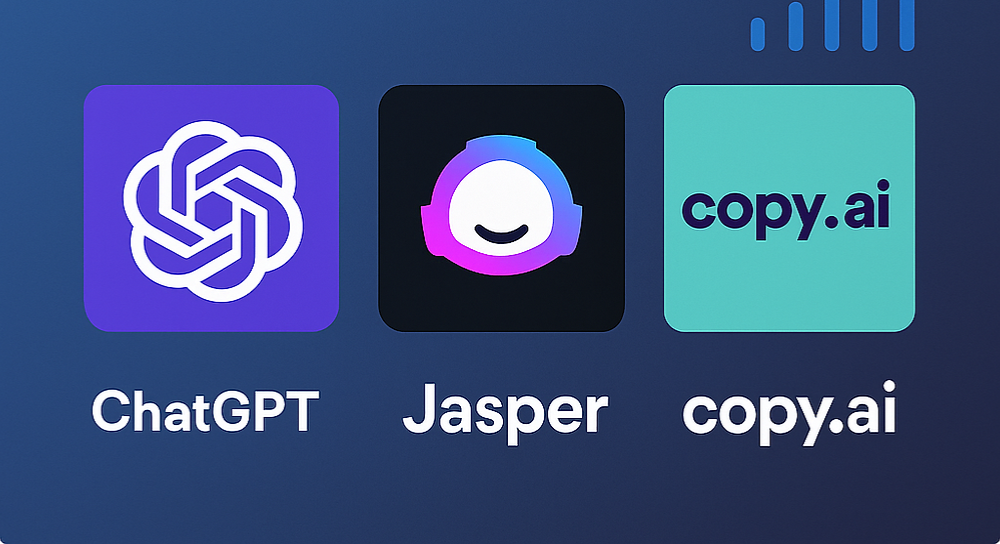
Writing content consistently is tough, but AI tools make it easier than ever to keep up. Platforms like Jasper, Copy.ai, and Writesonic can instantly generate:
- Blog posts tailored to your niche
- Sales emails that grab attention
- High-converting ad copy for Facebook, Instagram, or Google Ads
- Landing page content that sells your product or service
These tools not only save time but also help maintain a professional tone and ensure your messaging is clear and persuasive.
Social Media Automation
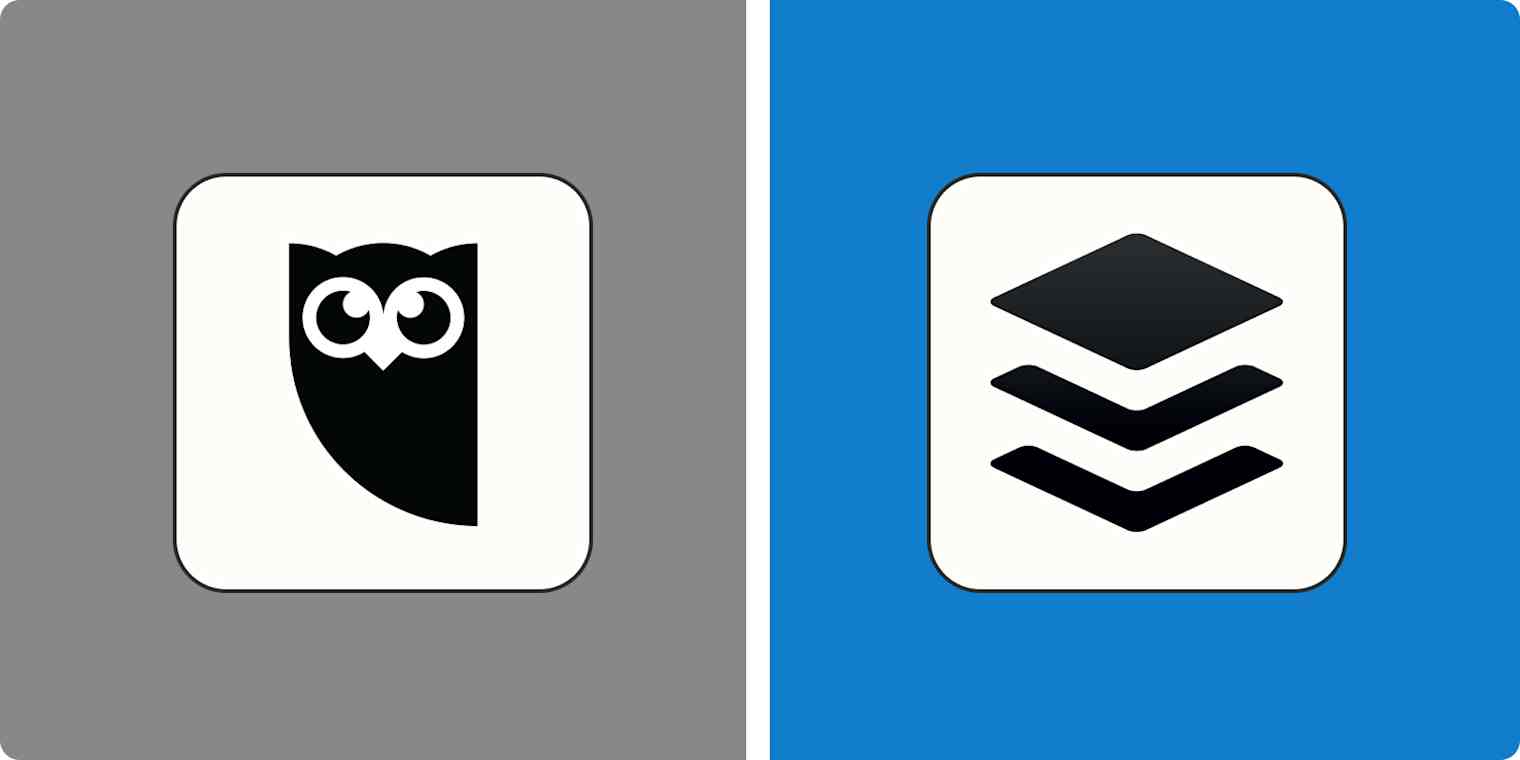
Staying active on social media is critical, but managing multiple platforms can be overwhelming. AI-powered scheduling and content tools can simplify the process:
- Buffer AI – Recommends the best posting times and generates engaging captions.
- Hootsuite AI – Automates both creation and scheduling of posts across channels.
- LatelyAI – Transforms a single long-form blog post into dozens of ready-to-publish social media updates, saving hours of repurposing work.
Visual Content Creation
Eye-catching visuals and videos are what drive engagement online. AI tools now allow small businesses to design and produce high-quality content without expensive designers or video editors:
- Canva AI – Creates professional banners, graphics, and branded designs in seconds.
- Pictory – Converts blog posts into short, shareable social videos perfect for platforms like TikTok or Instagram Reels.
- Runway – Automates video editing and ad creation, helping you produce polished content with minimal effort.
Real-World Example
A local coffee shop once spent hours every week managing its social media. Now, it uses Canva AI to design Instagram-ready graphics, Jasper to craft witty captions, and Buffer AI to schedule posts at peak engagement times.
What once required hours of effort now takes just minutes, freeing up staff to focus on serving customers instead of struggling with marketing.
Start small by automating one area, like social media posts or blog writing. As you get comfortable, add more AI-powered tools into your workflow to scale your marketing without scaling your costs.
AI for Finance & Accounting

Managing finances is one of the most stressful parts of running a small business. Many owners end up overspending on accountants or subscribing to expensive software just to stay organized.
AI-powered finance tools now make it possible to simplify, automate, and cut costs without sacrificing accuracy.
Tools to try:
- QuickBooks AI – Handles expense categorization automatically, forecasts cash flow, and even helps prepare for tax season.
- Xero AI – Gives real-time insights into your business’s financial health, highlighting trends and risks you might miss.
- FreshBooks AI – Makes invoicing effortless by creating professional invoices, tracking payments, and sending reminders.
AI takes care of the repetitive, time-consuming tasks so you don’t have to:
- No more hours spent manually entering receipts.
- Automated payment reminders mean fewer late or missed payments.
- AI-generated financial reports provide clarity, helping you make smarter and faster business decisions.
Imagine a freelance designer juggling multiple clients. Instead of chasing payments or forgetting to send invoices, they set up FreshBooks AI.
The system creates invoices automatically after each project and gently reminds clients when payments are due.
This not only reduces awkward conversations but also ensures a steady cash flow without extra effort.
Start by automating invoicing and expense tracking. Once that’s in place, explore AI-driven forecasting tools to get a clearer picture of your business’s future financial health.
AI for Sales & CRM Management
Sales and customer relationship management (CRM) are the lifelines of any business. But traditional CRM tools, while powerful, often come with hefty subscription fees and require a lot of manual input.

For small businesses, that’s both costly and time-consuming. AI-driven CRMs change the game by offering smarter, leaner solutions that help you focus on closing deals rather than managing spreadsheets.
Tools to try:
- HubSpot AI – A free CRM that uses AI to provide insights on leads and deals. Great for startups or small teams looking for a cost-effective entry point into CRM.
- Zoho AI (Zia) – Goes beyond simple tracking. Zia predicts sales trends, scores leads based on their likelihood to convert, and automates repetitive workflows so nothing slips through the cracks.
- Salesforce Einstein – Designed for larger teams or enterprises, it delivers advanced AI features like predictive analytics, personalized recommendations, and automation at scale. It’s powerful but comes at a higher price point.
AI-driven CRMs remove the guesswork from sales and customer management:
- Lead scoring: Identify which prospects are most likely to buy, so you focus your energy on the right opportunities.
- Automated follow-ups: No more forgetting to send that reminder email, AI handles it for you.
- Customer insights: Track behavior, interactions, and purchase history without manual entry, giving you a clear picture of each customer’s journey.
- Sales forecasting: Use predictive models to anticipate revenue and adjust your strategy ahead of time.
Consider a small digital agency with limited staff. Instead of manually tracking every potential client, they implement Zoho AI.
The system scores leads based on past interactions and automatically sends reminders for follow-ups.
The result? They spend less time on admin tasks, never miss a hot lead, and consistently close more deals, all without needing to hire additional salespeople.
Start with a free or low-cost CRM like HubSpot AI to learn how AI can fit into your workflow. As your sales pipeline grows, you can transition into more advanced platforms like Salesforce Einstein to scale up without losing efficiency.
AI for Project Management & Operations
Keeping projects on track is one of the biggest challenges for small businesses. Traditional tools often require a lot of manual input, updating tasks, chasing deadlines, or rewriting meeting notes, all of which eats into valuable time.

AI-powered project management tools cut through the clutter by automating the repetitive work, suggesting smarter ways to organize tasks, and even predicting potential bottlenecks before they happen.
Tools to try:
- Notion AI – Goes beyond simple note-taking. It can summarize meeting notes into clear action steps, draft standard operating procedures (SOPs), create project timelines, and even generate content for team documentation.
- ClickUp AI – A versatile tool that analyzes tasks, suggests priorities based on deadlines and workload, and automates workflows so your team spends less time managing projects and more time executing them.
- Trello + AI plugins – Perfect for teams that prefer a visual board system. AI plugins can automatically categorize tasks, predict delays, and send smart reminders to ensure deadlines don’t slip.
What can they do:
- Automate admin work: Meeting summaries, task updates, and follow-up emails happen automatically.
- Improve prioritization: AI can rank which tasks matter most and flag those at risk of delay.
- Streamline communication: Team members stay aligned without endless back-and-forth emails.
- Forecast challenges: AI can analyze patterns in your workflow to predict roadblocks before they happen.
Example in Action
A small marketing team holds weekly brainstorming sessions. Normally, someone would spend hours transcribing notes, turning them into tasks, and emailing the team.
With Notion AI, the meeting is instantly summarized into action items, assigned to the right people, and added to the project timeline.
Instead of wasting hours on admin work, the team can focus on creating campaigns that actually drive results.
Start small, use AI for one task, like meeting summaries or deadline reminders. Once your team gets comfortable, expand into more advanced features like predictive workload balancing or AI-generated reports.
AI for HR & Recruitment

Recruitment and employee management can drain both time and resources for small businesses.
Posting jobs, sorting through hundreds of resumes, scheduling interviews, and answering repetitive employee questions often overwhelm lean HR teams, or fall on the business owner.
AI helps by automating the repetitive, time-heavy tasks, allowing HR teams to focus on people rather than paperwork.
Tools to try
- HireVue AI – Goes beyond traditional interviews by analyzing candidate responses in video assessments. It can evaluate communication skills, problem-solving abilities, and even cultural fit, giving recruiters deeper insights before the first in-person meeting.
- Workable AI – Handles the early stages of hiring by writing job descriptions, ranking candidates based on their resumes, and providing shortlists of the strongest applicants. This Workable drastically reduces the time spent reviewing unqualified resumes.
- AI Onboarding Bots – After hiring, onboarding bots act as virtual HR assistants. They answer FAQs about company policies, provide training resources, and guide new hires through setup steps, helping employees feel supported from day one without overwhelming HR staff.
What can they help you with:
- Streamline recruitment: Quickly identify top candidates from hundreds of applications.
- Save time: Automate repetitive tasks like scheduling, resume scanning, and initial communication.
- Enhance onboarding: Provide instant answers to new employees, reducing confusion and improving retention.
- Improve candidate experience: Faster responses and smoother processes make your company more attractive to applicants.
Example in Action
A fast-growing ecommerce brand posts a new role and receives 500 applications. Instead of the HR manager spending days sorting through resumes, Workable AI analyzes them instantly and highlights the top 20 candidates most aligned with the role.
Meanwhile, once the best candidates are hired, an AI onboarding bot steps in to guide them through setting up payroll, signing policies, and learning company tools, freeing the HR team to focus on culture and employee growth.
Start by using AI in the recruitment stage (resume filtering and candidate ranking). Once comfortable, layer in AI onboarding tools to build a smoother, more professional new-hire experience.
Affordable or Free AI Tools vs. Expensive Traditional Software
Here’s a quick cost comparison:
| Task | Traditional Software | AI Alternative | Cost Savings |
| Customer support | Hiring 1 support agent ($2,500+/month) | Tidio AI ($29/month) | 98% cheaper |
| Content creation | Marketing agency ($1,500+/month) | Jasper AI ($49/month) | 97% cheaper |
| Accounting | Bookkeeper ($400+/month) | FreshBooks AI ($19/month) | 95% cheaper |
| CRM | Salesforce ($150/user/month) | HubSpot AI (Free) | 100% cheaper |
| Design | Adobe Creative Cloud ($55/month) | Canva AI (Free–$12/month) | 80% cheaper |
As you can see, small businesses can save thousands per year by switching to AI tools.
ALSO READ: The Biggest Mistake Beginners Make With AI (And How to Avoid It)
How to Integrate AI Into Your Business Without Overcomplicating
One of the biggest mistakes small businesses make with AI is trying to do everything at once, signing up for multiple tools, paying for features they don’t need, and overwhelming their team in the process.
The truth is, AI should make your business simpler, not more stressful. The best approach is to introduce it strategically, step by step.
A simple framework to follow:
- Start Small – Choose one area of your business that eats up the most time or resources. For many, this might be customer support, bookkeeping, or marketing content. By focusing on a single function, you can see results quickly without disrupting your entire workflow.
- Test Tools First – Most AI platforms offer free trials or limited plans. Take advantage of these to experiment. Test usability, accuracy, and whether the tool actually solves your problem before committing to a paid version.
- Measure ROI – Keep track of the hours saved, the reduction in costs, or the increase in revenue. This helps you determine if the tool is worth keeping and prevents you from paying for “shiny” software that doesn’t move the needle.
- Scale Gradually – Once you’re comfortable and see real benefits, only then should you add more tools. This phased approach ensures you’re building on proven wins instead of stacking complexity.
Example in Action
A small neighborhood bakery wants to attract more customers but doesn’t have a marketing team. They start with Canva AI to design quick, professional social media posts.
Within weeks, foot traffic improves thanks to consistent online visibility. Encouraged by this success, the owner later introduces FreshBooks AI to handle invoices and payment reminders, reducing late payments.
By integrating AI slowly, the bakery grows its efficiency without feeling overwhelmed or overspending.
Think of AI as hiring digital assistants. Start with one “assistant” for your biggest pain point. Once they prove valuable, bring on another.
This way, your team (and budget) adjusts naturally, and AI becomes an asset instead of a burden.
Conclusion
Automation with AI isn’t about replacing people, it’s about making life easier for small business owners who already wear too many hats.
Here’s your AI adoption starter kit:
- Use Tidio AI for customer support.
- Try Canva AI + Buffer AI for marketing.
- Automate invoices with FreshBooks AI.
- Manage projects with Notion AI.
Start small, track the results, and grow from there.
By swapping expensive software (or manual work) for AI-powered tools, you can save thousands per year while gaining back the most valuable resource of all, your time.





